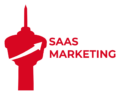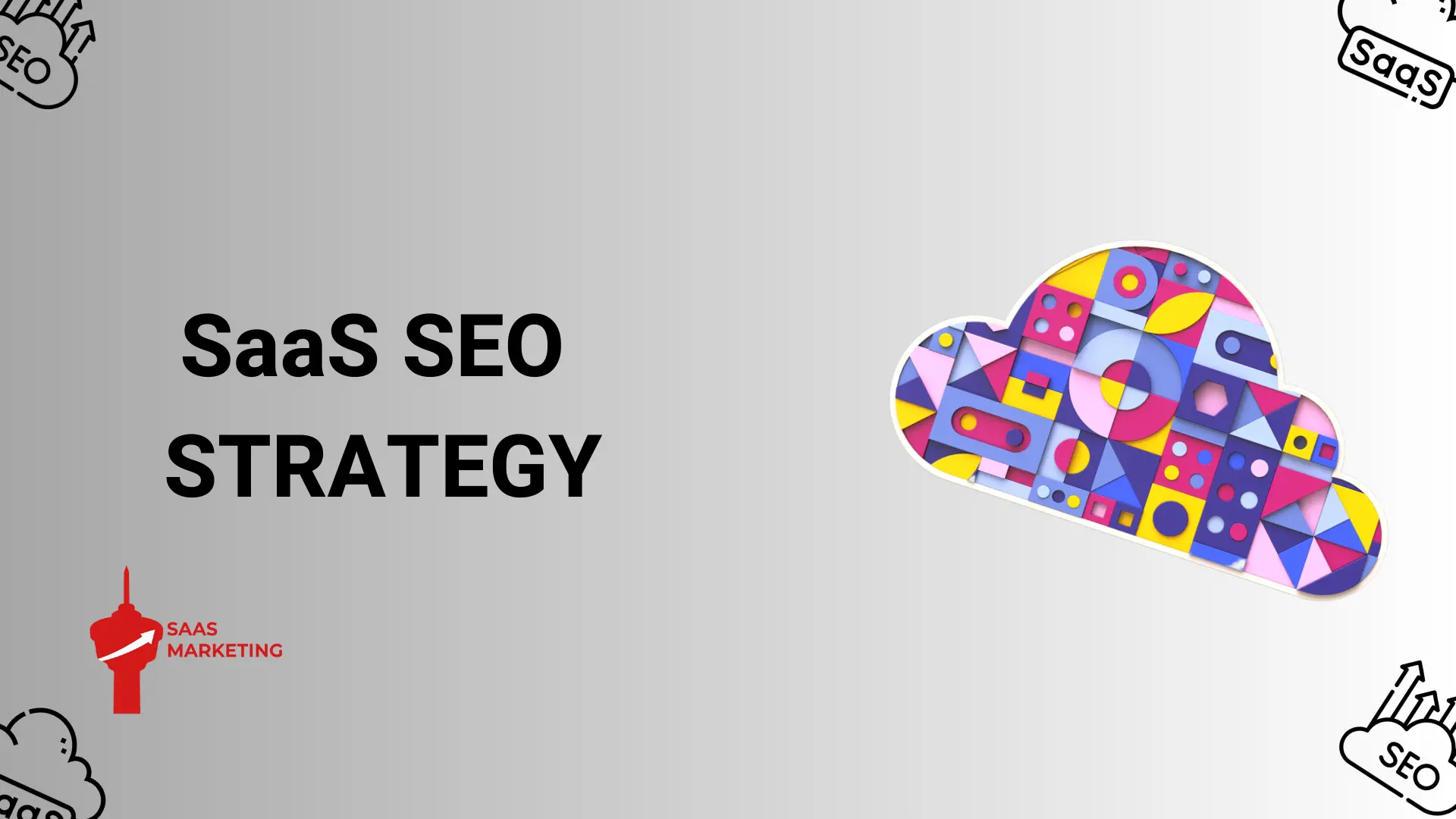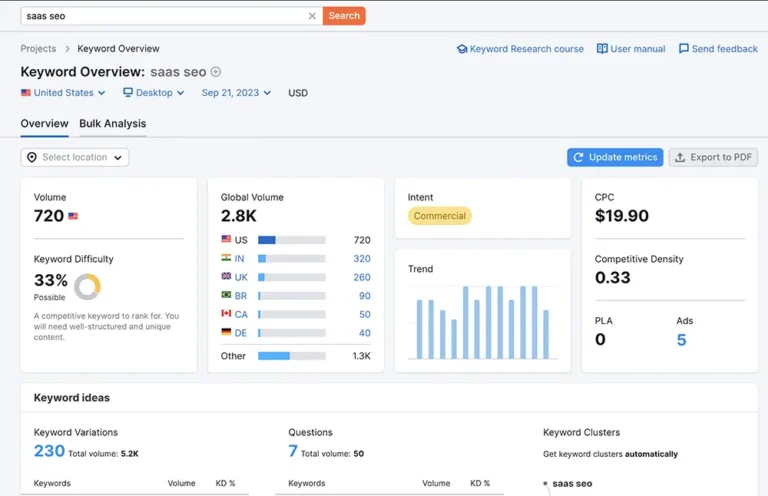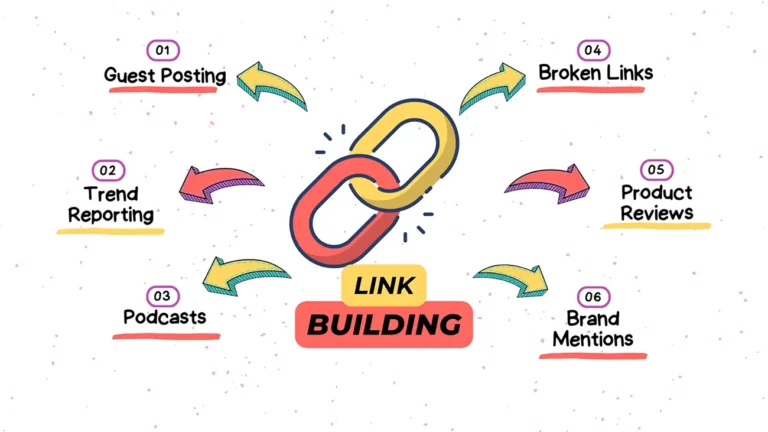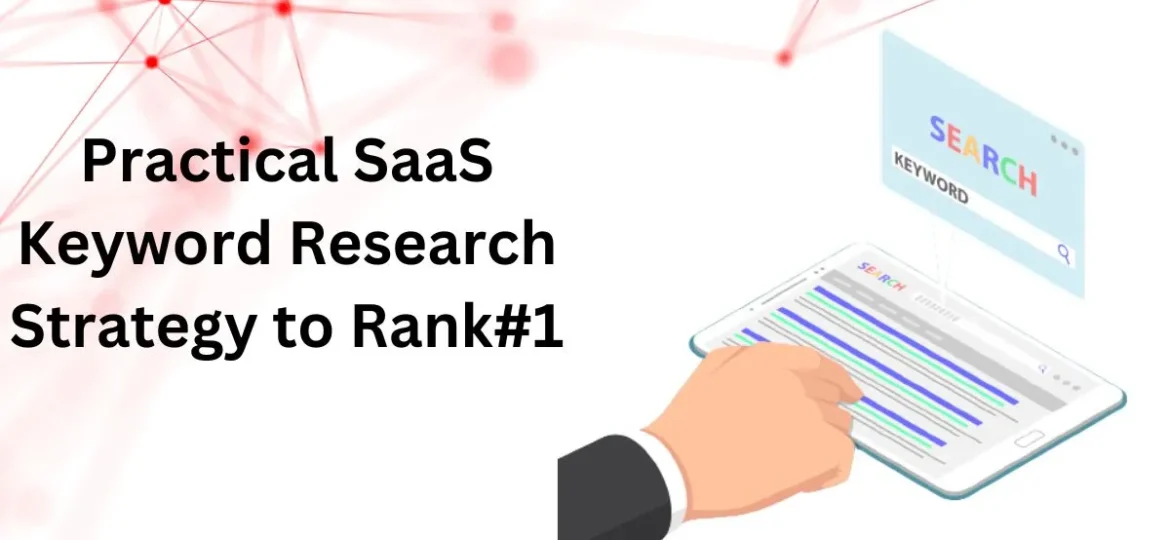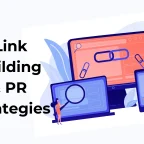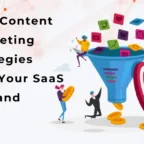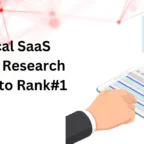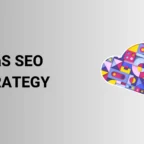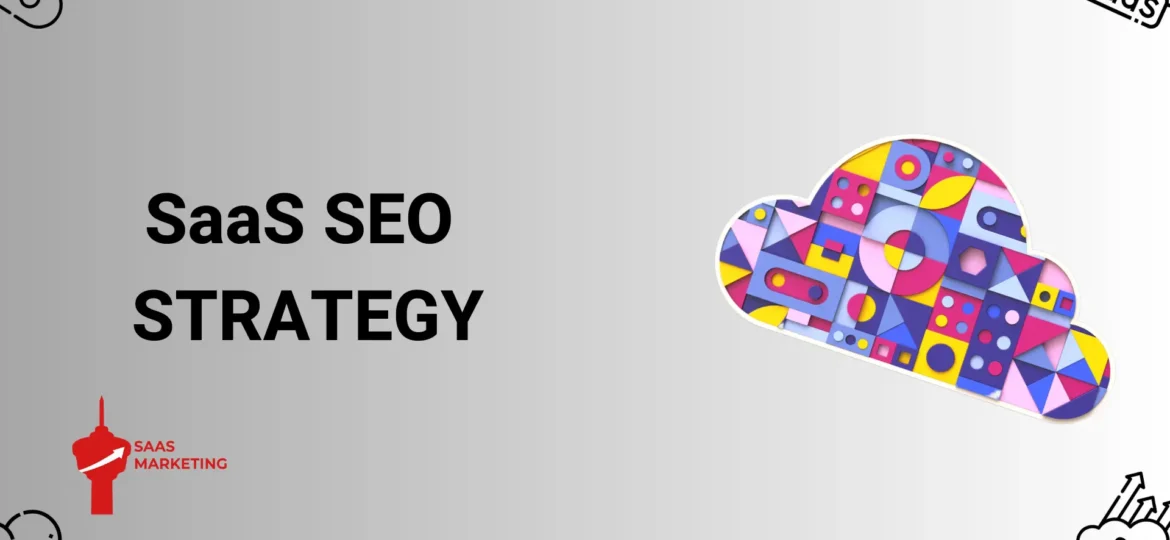The outdated actionable strategies were to build a SaaS website with a modern theme, sophisticated CMS system and simply write content, and you’re done. As the search engines keep getting smarter, strategies need to be evolved now— and SEO is considered the new art! Delivering valuable content that solves the user’s actual problem with your Software-as-a-service will keep you going in this industry. Let’s move on to some details of what SaaS SEO is and how it can help you grow your business:
SaaS SEO (Search Engine Optimization) is all about the techniques and principles of growing traffic, mainly organic to your business. It’s all about utilizing valuable content alongside top-ranked keywords to earn higher positions in SERPs.
How is it different from the traditional ways of marketing? Many SaaS businesses still rely on online ads, social media marketing, affiliate marketing, and other usually paid methods to scale their business, but the costs are substantially higher than SEO. So, whenever you stop advertising, there is a high chance you won’t get any new traffic. Interestingly, content marketing costs 62% less and generates up to 3 times more leads than traditional marketing.
On the other hand, SEO is a technique that, if done correctly, can help you drive consistent traffic and, ultimately, exponential growth. Doing it well means targeting the right audience with the right keywords.
The SaaS SEO Strategy— Road Map to Success:
Before we get into the detailed insights on SaaS SEO strategies and how they can help you promote your Software-as-a-Service, here is a brief roadmap. The marketing tactics can increase your sales if the customers search for your software directly. At the same time, that’s not the case regarding search engine optimization techniques— as the spectrum gets wide here. The users/customers can look for various things, and SaaS SEO can increase visibility organically. People can look for:
Software Directly: The users might know the name of your software-as-a-service product and search directly.
Related Information: Users can look for the related information and will know that software exists for that particular problem. That’s where the SEO fits in! You can post blogs with relevant keywords and information to help your audience reach you organically.
Importance of SaaS SEO – Reasons Why You Need it:
Do you know SaaS companies or businesses spend 30-40% of their revenue on marketing? That’s a significant number. SaaS companies are urged to get overnight success with paid brand marketing, ads, and social media campaigns, which can cost them a big chunk of revenue. Instead, promoting the software-as-a-service products organically with SEO strategies is what you need to grow exponentially. Here are some reasons why SaaS SEO should be your top marketing choice:
Exponential Growth
Overnight success is no success. To generate organic traffic and convert it into leads or sales, you must be consistent and devise actionable strategies rather than looking for an overnight success tactic. SaaS SEO includes generating content on the relevant keywords that the competitors might already rank but will also help you grow. Getting organic traffic from the ranked content might be lengthy, but it will help you grow exponentially.
As Steve Jobs said:
"If you look closely, most of the overnight success stories took a long time."
Another key to SEO success is the more you create— the more you get. Content-led SEO can increase traffic if you write valuable information covering many relevant keywords. Moreover, generating more content doesn’t mean affecting the quality or compromising the effectiveness of titles, descriptions, CTAs, and optimized landing pages. All of these can combine to create a sound technical website, and that’s what the SaaS giant HubSpot did a few years ago.

HubSpot Case Study
While we move on to the next factor describing the importance of SaaS SEO, let's stop here to discuss the SaaS giant HubSpot and break down its success story. HubSpot correctly utilized the SEO techniques to grow exponentially. The keywords rankings on Google's first page increased by 480%, while in the top 100 results, the number has increased by more than 300%.
What we learned from the case study is:
- Valuable content with relevant keywords can help you generate leads.
- Compare and analyze the content ranking with each new addition to optimize it.
- Try to get consistent traffic and ultimately achieve the top rankings.
- Repeat the steps that bring in organic traffic.
Reduced CPA
Paid ads and advertising will cost you more CPA (Cost Per Acquisition), and the science behind this is simple: pay for a new individual on your platform or, in other words, a single click. The more the clicks, the more you will pay. That’s how most of the paid marketing channels work.
Therefore, each time you get a new click, you have to pay, and the worst part is that the costs are getting higher with time. By the time your audience will likely convert to customers, you’ll get exhausted by paying a hefty amount. Then, a point comes where you cannot reduce further CPA and get stuck. As a result, the increased CPA will reduce the business profit margins.
On the other hand, SEO tactics are the opposite of this! The SaaS SEO techniques can cost you more initially, including the cost to build a website, craft the content and post it nicely (with modern themes and so on). However, the costs will start getting reduced once the content is ranked. Also, unlike the paid marketing channels, the cost per acquisition remains flat and doesn’t increase.
Higher Conversion Rate
SEO is not just about blogs and articles, it’s about getting the right customers for your SaaS business. Even though SaaS SEO involves higher investments in content creation. Ultimately, this content will help you get the leads even from the other means of business marketing campaigns such as social media posts, email marketing, and more. Moreover, you can even earn website backlinks, which will be a different marketing track for you.
All of these strategies can convert your users into potential customers and increase the ROI with the help of optimized content. Consult the best-known content writing agency backed by several experts who would help you generate the leads with their expert-level content strategy and influential power.
SaaS SEO Framework— Key Components and Their Importance
SaaS SEO Framework comprises mainly two sub-categories called the business model of SaaS companies and the SEO framework they utilize for their growth. Let’s break down both and have a look at the insights.
· SOFTWARE-AS-A-SERVICE BUSINESS MODEL
SaaS companies are a promising business model as most online business experiences can begin with the search engine, and that’s where a business needs to put its maximum efforts in. However, SaaS business models are not traditional and require the utmost attention regarding SEO. Traditional and old-styled SEO methods will not generate leads and conversions.
What makes them unique is that the SaaS business model includes a product that is not tangible or physical but holds the utmost importance to the audience or its end-users. The best part about having a non-tangible product is that you can always update, upgrade, modify, and improvise per the user’s needs and requirements.
Moreover, this business model will also help you greatly in marketing as improvising products keep the industries under one umbrella and promote the audience’s confidence in your product. Not only this but modifying products to fit in the market also helps you rank organically with the targeted SEO.
· SAAS SEO FRAMEWORK FOR NON-TANGIBLE PRODUCTS
As said earlier, SaaS companies or business models are different in their league due to being pivoted around non-tangible products that can be modified or improvised to fit organically on search engines. Thus, this makes the SEO simple yet complex at the same time.
SaaS SEO is all about driving organic traffic to your website/ business platform and generating leads— thus, it includes keyword research, technical structuring, content strategies, link building, and more. Having said that, there is a defined SEO framework designed by experts that works perfectly in most scenarios. Here are some critical components of the SaaS SEO framework for almost all non-tangible products.
KEYWORD RESEARCH:
The first step or component of the SaaS SEO Framework is keyword research. You must identify the keywords to rank by analyzing the competitors’ content and looking for the targeted ones for your marketing campaign. The detailed keyword research will include the practices of finding short-form and long-form keywords that’ll help you rank on the top spots of SERPs.
TECHNICAL STRUCTURING:
The next step is the technical structuring, which includes the sitemaps or website building. This step holds utmost importance in the whole framework, as building your website around old or outdated themes can make your website look scammy, and you’ll never get the audience’s trust at the first look. Moreover, apart from designs and site mapping, this step includes adding meta tags and core web vitals, which can help your website look authentic as well as help generate leads.
CONTENT CREATION AND STRATEGIES:
SaaS SEO Framework is all about creating valuable content and optimizing the strategies to outline the information in the best possible way. The content must be product-related and revolve around the problems that your product is solving. The SEO-optimized blogs and posts will help your audience relate to your SaaS product and ultimately convert to potential customers in a few visits.
Driving the marketing campaign will also include some of the free tools or a few free features of the leading products to drive in more customers and influence them to buy the paid subscription. Thus, make sure to design the optimized landing pages of those free software or tools so that you can generate traffic to influence users.
Interestingly, the Content Marketing Institute report highlights that over 57% of the most successful B2B tech businesses outsource their SaaS Content Marketing activities.
Another content strategy includes comparison pages or blog posts that compare your products with some of the top industry rivals or competitors so that users can understand your unique selling point.
LINK BUILDING:
Last but not least is link building, which includes guest posting, external link building, digital PR, and more. Link building is an additional marketing campaign with its individual significance but is also a major or integral part of content marketing itself.
· KEY STRATEGY TO RANKING
SEO ranking strategies are a bit complex these days due to the recent revolution in the industry. Implementing artificially intelligent tools and the improvised search engine crawler have changed all the ways of ranking. However, a few techniques and factors are still in practice to let you rank your content and generate leads for your SaaS business. Let’s find out more:
VALUABLE CONTENT:
The very first strategy to rank content is the valuable content itself. The content must not only promote your SaaS products or business but also solve your targeted audience’s significant problems. For example, you’re promoting farming or agricultural-related SaaS products. You can promote your software as a service to help farmers ease the work, write about their problems, and present some solutions— it’ll help you rank organically and better relate to the end users.
Link Metrics:
Link metrics are the system of measurements to increase the ranking of your article or blog post based on internal or external linking. This method has proven to have great results for SEO professionals in the past regarding rankings and improving business sales. Link building includes various sub-tasks of adding internal links from your website, external relevant links from the other domains, and adding relevant anchor points.
USER ENGAGEMENT:
The bounce rate of a website defines whether a user stays on your website for a longer time or bounces back immediately after visiting it. Understanding the factors that can reduce the bounce rate and improve the retention of users who can ultimately become potential customers of your SaaS products is essential. Moreover, user engagement involves further metrics, which are as follows:
- Dwell time corresponds to how long a user stays on a webpage.
- Click rate of a webpage that shows the user’s interaction.
- The page views metric is the total number of pages visited on your site.
Thus, these metrics revolve around the user’s interaction or engagement with your website, which can be directly improved via the quality of content and valuable information. Not only does the content play a role in engagement, but factors like the UI, mobile compatibility of your website and customer support serve a significant purpose. More than 65% of the customers prefer self-service rather than consulting with a company’s representative, which shows that SaaS products’ pricing, features, and customization options should be clearly stated on your website.
Now that we’ve done with the overview of the SaaS SEO Framework, it’s time to move on to the factors that lead towards SEO ranking individually.
Factor 1: Keywords Research Strategy for SaaS Companies
Keyword research is the backbone of ranked SEO content and, ultimately, the success of the SaaS business model. We can define keyword research in the SaaS business model as follows:
"Finding the right phrases or taking insights into the exact language of your end user."
To know the importance of keyword research, here is a recent stat from the Content Marketing Institute: More than 75% of marketers in this industry utilize keyword research for creating marketing content for their companies or businesses.
Find the Right SEO Keywords
The essential growth element defining overall SEO success is researching the keywords that describe your customer’s persona and the phrases the end-users use to search for relevant SaaS products. If we go deeper into this, we can start by creating a list of keywords by analyzing the competitors in the industry. For this, you might need an SEO keyword research tool, as manually analyzing multiple competitors can be hectic and may not be fully effective.
Gather Them in a Spreadsheet
Once you’re done with the keyword research, the next step is to gather them in a spreadsheet and compare all competitors. The comparison will let you discover what your competitors have in common and where you can improve the keyword list. You can further explore the competitor’s website by analyzing the whole domain in the keyword research tools. You can examine rankings, authority, traffic, and more using the tools’ analytics or domain overview feature.
Prioritize Keywords or Phrases
That’s where you need to pay attention, as it might look simple but can help you rank the content and generate sales in months. Prioritizing the keywords means ranking them based on search volume and importance as High, Medium, and Low. This practice will help you end up with 10 or 15 of the most prioritized keywords. The main aim is to rank the keywords based on the user’s engagement and buying intent. Most importantly, these prioritized or selected keywords will define your next strategies for further content.
Keyword Mapping
You’re researching the keywords and prioritizing them for what? Search Engines— a big NO! The SEO seems related to search engines, but the end-user drives it. Therefore, you must craft your content for your SaaS product’s end-users or potential customers and not specifically for search engines. This can be done by adding value to content, and Google will help you rank it anyway when customers find it interesting to read.
There are three factors to keep in mind for keyword mapping: Awareness, Consideration, and Decision.
- Awareness: The awareness stage is related to the higher volumes and broad spectrum. You can also define this as the goal topic from a broader perspective.
- Consideration: The consideration corresponds to the explanatory keywords. For example, if the end-user has identified what’s wrong and is looking for a solution to a specific problem. The audience might not be looking for a paid subscription here but is eager to know the solution that might influence them to buy software.
- Decisive: The decision phase corresponds to the buying intent of the user. The buying intent involves particular terms or keywords from the user side, such as pricing, review, best tool, alternative, buy, and more. For example, a user will only search for pricing or review of a particular software if they are eager to pay. Thus, you can utilize all such terms and keywords on the landing page where you’re selling the services.
Factor 2: Content Production and Marketing Strategy for SaaS Companies
Do you know that SaaS companies utilizing the potential of content marketing report up to 400% lead generation growth. Particularly, in the B2B tech space, more than 80% marketers believe writing is the most important of all content marketing skills.
Nearly 50% of SaaS businesses have already devised a well-structured content marketing strategy and consider content quality one of the top factors in general leads and sales? This is because customers love to learn about a company or business through the content, and as per a survey, more than 68% of the users read about the brand they love. Why not utilize these mass numbers and be a brand loved and appreciated by the end-users? You can achieve all this with the help of a content marketing strategy for your SaaS business.
Hire a good content writing agency and be a part of that 90% of brands already utilizing content marketing strategies to pave their way to the moon.
Identifying the Audience is as Important as Competitors
You might see different SaaS companies or marketers devising their strategies by identifying the end-users— which is undoubtedly essential. But one can analyze competitors to keep up the market insights and know what’s trending and which method generates leads. Identifying the target audience might lay the foundation for your marketing needs, and here’s how it’s done.
Ask yourself some basic questions, and you’ll get to know the target audience and the marketing strategies to follow accordingly. For example: To which age group your SaaS product will be best? Or is there a specific industry you’re trying to sell in? or is there any income level you’re targeting and so on! Once you answer all these questions, you’ll be ready to define your marketing strategy.
Moreover, you can utilize social media platforms’ services to discover your popular category, such as Facebook, which offers an analytics tool that lets you check the age group, gender, and regions of your following.
Next, to analyze the competitors, you can divide them into the following categories: Competitors can be direct or indirect.
Direct Competitors— These include a list of those companies or businesses that offer the same SaaS products as yours. The product might differ in features, trials, or even pricing, but the core job is the same.
Indirect Competitors— These include the brands or companies with no direct connection, such as an altogether different product or solving the same problem with a diverse product with some side features.
Invest in Marketing Assets
Once you identify the audience and the competitors, the next goals are to set your goal and invest in the marketing assets. What can be the marketing assents for SaaS content marketing? The Content! Hire a diligent and experienced Content Writing Agency to generate content your audience can relate to. The content includes all the copywriting, scripts, designs & themes of infographics, product descriptions, and more.
Apart from the content writing team, you’ll also invest in an optimized website. Make sure to take care of the UX and UI of a website. Moreover, expect a higher bounce rate if your landing page’s loading speed is low.
Factor 3: Link-Building Strategy for SaaS Companies
One of the most underrated yet effective ways to boost your SaaS company’s website and earn organic traffic is through link building. Link building is often overlooked by most of the experts. However, it must be noted that face-side might be the content, but behind-the-scenes magic always depends on backlinking. You can follow the stated strategies for link building.
Link-Building Guide
- Guest posting— One of the most common types of link building is via guest posting. SEO experts should know the importance of guest posting as it enables you to build relationships with the authority sites and generate organic traffic to your SaaS site, boosting the overall authenticity on search engines.
- Trend Reporting—Not all clicks can be gained through building relationships with authority sites! Another common way to boost organic traffic to your SaaS website is by generating high-quality, informative content through trend reports.
- Podcasts— This might seem weird, but podcasts can help you get clicks on your site. But how? Most podcasts have a website where they publish the written version, and you can always include links to the relevant podcasts’ websites— and the odds might come your way!
- Broken Links— Broken links refer to those links that no longer work or have been removed. If a website removes a blog (which was linked), it’ll be called a broken link. You can always contact the website owner to write a new piece of content in place of that broken link— it’ll get you organic traffic (however, it can be time-consuming).
- Product Reviews— This is the most common way of link building and what we call the PR. You’ll provide your SaaS software to the bloggers and celebrities in your niche (it can be a trial version for 2-3 months) and ask them to write a review. You might get a customer in the shape of that influencer later on, and the product review will bring more.
- Brand Mentions—This is a bit of an advanced level of link building and might not work at the beginner level. Here, you’re already getting traffic and have generated enough authenticity in the market that other websites have your homepage linked somewhere in their blog. You can ask them to link a more relevant page (such as a landing page to your SaaS software/product pricing) and generate traffic. It’ll increase the chances of getting new customers.
- Widget Link Building—Widget link building is where you add a button (such as Start/Contact) and embed your SaaS product directly. This is also called the product embeds and includes a “powered by” link to the relevant page.
Factor 4: Technical SEO Audit Strategy for SaaS Companies
SaaS technical SEO is all about the technical structure elements of a website other than the content itself. It gets complicated with time as more and more elements are being added to the list to be taken care of, and optimizing each can be troublesome for you. Additionally, you cannot ignore the technical SEO audit for your SaaS website, as on-page optimization can lead to great sales and organic traffic. SaaS technical SEO audit can also evaluate the website’s performance by analyzing the structure, improving the loading speed, and more.
SaaS technical SEO audit includes two significant portions here: Core elements and Unique elements. The SEO experts have already identified core elements that must be considered the most. On the other hand, our team of experts has researched some of the unique components of technical audit, which we’ll also present in front of you.
Core Elements of Technical SEO Audit: Technical SEO audit of SaaS companies requires you to focus on improving access to website crawling, UI/UX friendliness, secure protocols (Https), loading speeds, structuring of data, and the website architecture as a whole.
Unique Elements of Technical SEO Audit: Some of the additional elements of SaaS SEO technical audit include ensuring the content is dynamic, utilization of Single Page Applications (SPAs), optimizing the informative documentation of software, and regularly apprising the content even after minor software update releases of your software.
Technical SEO Audit Checklist
As a SaaS website owner, here’s a checklist for you to do a detailed technical SEO audit for your website:
- Ensure Website’s Easy Accessibility— Ensure your developer uses simple yet modern themes, layouts, headings, and colors to enhance the authentic look.
- Improved Navigation and URL Structuring— Ensure your website is well-structured to ease crawler access. Moreover, a well-structured short URL helps the crawlers of search engines to understand and comprehend the content in a better way. Keep the URLs descriptive yet concise, separated by the hyphens, and avoid duplication.
- Website’s Loading Speed—The faster, the better— that’s the whole idea for a website’s loading speed. In this technological era, people are in a hurry. Updated Core Web Vitals presents a perfect and smooth way to lower the bounce rate and enhance the user’s retention.
Factor 5: SaaS SEO Timeline Results
Don’t rush and wait for fruitful results—that’s the essence of SEO! SEO will take about 3 to 6 months to show the practical results, and the time frame may also go up to one year for some of the SaaS sites. The ranking process might start three months from the posted content date, and the organic traffic starts rushing in.
Thus, the SaaS SEO timeline can be defined as the time frame by which your website will see organic traffic based on your efforts for the SEO. The success somewhat depends on three major factors: quality of content, website security, trust level of search engines (such as Google), and the industry’s overall competitiveness.
- Quality of SEO: SEO comprises the content, keyword research, website’s overall look, technical elements, and more. Therefore, quality of SEO is a wider term and can include from the basis of content production to the complex security needs and core elements. Moreover, the quality of SEO doesn’t mean gathering all the data, structuring it well, posting it, and waiting for the results. It means that every step must be done effectively and carefully. For example, content production can be done in a few weeks with minor keyword research strategies being employed, and it can be proven ineffective. Why waste your investment when you can hire a decent content writing agency that produces quality content and cares for your hard-earned reputataion.
- Google Trust: Google’s Trust is a broader and generic term with many technical components under the umbrella. It describes the website’s ability to rank on the search engines. Google’s trust depends on the inbound links and high-quality content.
Factor 6: SaaS SEO Analytics— KPIs and ROIs to Track
Regarding SaaS, KPIs, and ROIs are two significant factors you’d be seeing more and analyzing greatly. For SaaS SEO, here are some of the top KPIs as identified by the experts:
- Keyword SERP Rank: One of the most common yet informative Key Performance Indicators (KPI) is the keyword SERP rank, which is mostly utilized for determining the keyword strategy effectiveness.
- Backlinks: Another KPI experts find helpful is the backlinks that clearly describe the content’s value.
- Bounce Rate: The rate at which the visitors leave your website within seconds helps find the better keywords.
- ROI: ROI can be described as the KPI in SaaS SEO and can measure the returns from the investments made for quality SEO.
- Crawl Errors: These are part of SaaS SEO KPIs and help find out what’s wrong with the website’s URL or content structuring that the crawlers find hard to comprehend.
- Organic Traffic: This KPI lets you understand the quality of content, keyword research strategy, and lead generation content opportunities as well.
- Conversion: Keep track of your strengths as well as weaknesses by finding the conversion rate.
